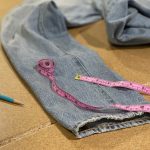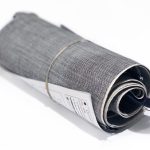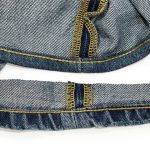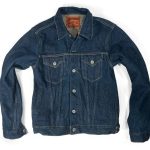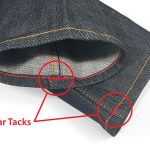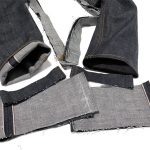TCB Jeans crafts history into every stitch, reviving iconic denim like the 1966 Levi’s 501 and the 1955 Levi’s 701 with unparalleled authenticity. It's not just about wearing jeans; it's about embodying a piece of denim's storied past, meticulously re-created...
Read More →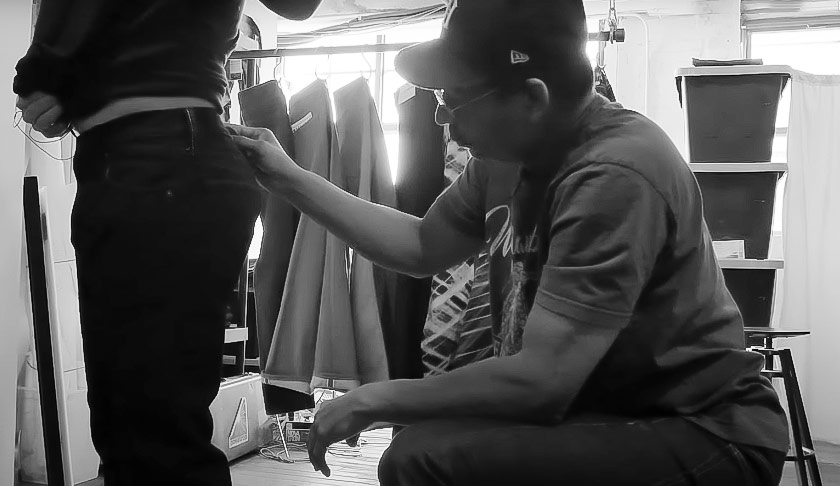
Nick English of Stridewise dropped by our 67 West Street studio in the heart of Greenpoint, Brooklyn, entrusting us—the nation’s top-tier denim alteration specialists—with refining the fit of his jeans at the waist. Dive into our expert process through this video, and if you’re plotting a course to our doorstep, we’ve included some handy navigation tips to guide you right to us.
You might be interested in
TCB Jeans crafts history into every stitch, reviving iconic denim like the 1966 Levi’s 501 and the 1955 Levi’s 701
In a sea of seasonal brews, Master of Pumpkins Ale by Tröegs Independent Brewing rises to the top. Our review
How to measure the inseam of twisted-leg jeans is made clear in our video lesson. Learn how to handle this
Is it called selvedge or selvage and what is it? We explain.

Jeans and pants are a part of our everyday lives, and there’s more to them than just the fabric. Have you ever thought about the seams? They play a big role in how your jeans and pants look, feel, and last.
Excluding tailored clothing which is generally a single lockstitch with merrow stitching or binding over the edges, the two main kinds of seams in jeans and similarly constructed pants are flat-felled and overlocked seams.
If you’re thinking about tailoring your jeans or pants (especially tapering) or just want to know more about fashion, it’s good to understand these seams. Why? Because each seam type comes with its own set of benefits and challenges that can significantly affect the alteration process, durability, and aesthetics.
Flat-felled vs. Overlocked seams
Flat-felled seams are the most common type of inseam construction on jeans and similarly constructed pants. They are created by folding the raw edges of the fabric over, and on themselves, then stitching them together. This creates a strong and durable seam that is also very flat and neat. These seams are celebrated for their durability, fray resistance, clean finish, and aesthetic value. Flat-felled seams are often used on high-quality jeans in the light-to-midweight fabric range but can be a problem with heavyweight or thick fabrics because of the multiple layers of folded fabrics required to sew through where seams meet and the fabric’s weight.
When it comes to sewing through multiple seams, manufacturers of heavyweight denim will use flat-felled seams at the seat, even though they must sew through 12 layers of fabric where the yoke and center seat seams meet, and avoid the flat-felled seam on the inseam, where 8 layers of fabric must be sewn through in the crotch, for several reasons.
First, in the seat area of jeans and similarly constructed pants, the flat-felled’s low profile, smoothness, and visual aesthetic have more value than an overlocked seam. Second, because of the shorter distance regarding sewing, errors can be more quickly corrected compared to the long distance at the inseam.
Some brands, such as Bravestar and a few others, will take on the massive challenge of producing heavyweight jeans with flat-felled inseams. Sewing flat-felled inseams of heavy jeans during tapering is tough in our experience, not because of the fabric’s thickness, but due to the weight and gravity pulling on the jeans while they hang under the off-the-arm sewing machine. The weight exerts a continual tug on the fabric, which the sewer is attempting to hold upward into the folder, which causes the fabric edges to turn over, to create flat-felled seams. Shorter sewing distances, such as the rear yoke and center seat seams, are not a problem. Longer sewing distances, such as the inseam, have three to four times the weight and force pulling the fabric down and out of the folder. As a result, every time the sewer adjusts their hand position while sewing, the fabric slips down, or lower in the folder, causing sewing problems. This is most certainly the most significant explanation for why factories prefer to produce heavyweight jeans with overlock inseams.
Overlock seams, also known as serged seams, are another common type of inseam construction. These are generally used on the insides of the garment. Overlock seams are created by an overlock machine, which stitches the seam, trims the seam allowance, and encases the edge of the fabric with thread, all in one step.
The overlocked seam is more valued at the inseam on heavyweight jeans because it’s easier to sew. Also, it does not create as much bulk where the seams meet in the crotch, where there is lots of movement, unlike the yoke area of the seat, which sits flat. Lastly, the more unsightly appearance of the overlock seam is not visible on the inseam unless the jeans are turned up at the hem.
While not as durable or aesthetically pleasing as flat-felled seams, overlock seams are quicker and more economical to produce. They also provide adequate fray resistance, which is particularly important on the raw edges of denim.
The Importance of seam type in Tapering Jeans and Pants
What does this have to do with getting your pants and jeans tapered? To begin with, the type of seam influences the method and difficulty of making an alteration. The vast majority of tailors will taper jeans and pants from the outseam to avoid the inseam because of a lack of equipment, knowledge, or both. This is not an option with selvedge clothing since it would damage the selvedge. Unless flared, or garments designed for curvy bodies, the shape of jeans and pants legs is typically drafted in the inseam, leaving the outseams mostly straight up to the hips. As a result, modifications should also be made to the inseam.
Tailoring flat-felled seams requires a feed-off-the-arm sewing machine to be done correctly, and in order to maintain the original construction. It also requires skill and knowledge of the construction techniques used on mass-produced read-to-wear garments, which often have very different rules than tailored clothing.
Overlock seams, on the other hand, are easier and faster to alter. An overlock machine, which is one of the more common types of sewing machines available in many types of tailoring establishments, can be used to cut and re-sew the seam. Most tailors will struggle with how to handle the top stitch that is sewn on top of overlocked seams. Without an off-the-arm machine, it’s impossible to sew a fresh top stitch from hem to hem in a single pass, without taking the garment apart. Because they can only sew so far up the leg, heading upward towards the crotch, they must either link a new top stitch to the previous one. Alternatively, they can open the outseams all the way to the hips in order to fit the jeans or pants through a flatbed machine, sewing around the inseam, in a single pass.
In Summary
Choosing to taper your jeans can give them a fresh lease of life, adapting them to changing trends or personal style preferences. But before you take them to a tailor, examine the inseam construction. Knowing whether you’re dealing with a flat-felled or overlocked seam will help you understand the complexity of the task and manage your expectations regarding cost, time, and final appearance. This way, you’ll ensure you’re making an informed decision about tailoring, helping your favorite denim remain a staple in your wardrobe for years to come.
You might be interested in
This video, which we posted on Instagram and TikTok, walks you quickly through our chain stitch hemming procedure.
Is it possible to get a denim jacket tailored? At Williamsburg Garment Co., this is a commonly asked question. Yes,
What are they, and why are they sewn over the chain-stitched hem line on some jeans?
Who better to explain the two meanings of tapered jeans and pants.
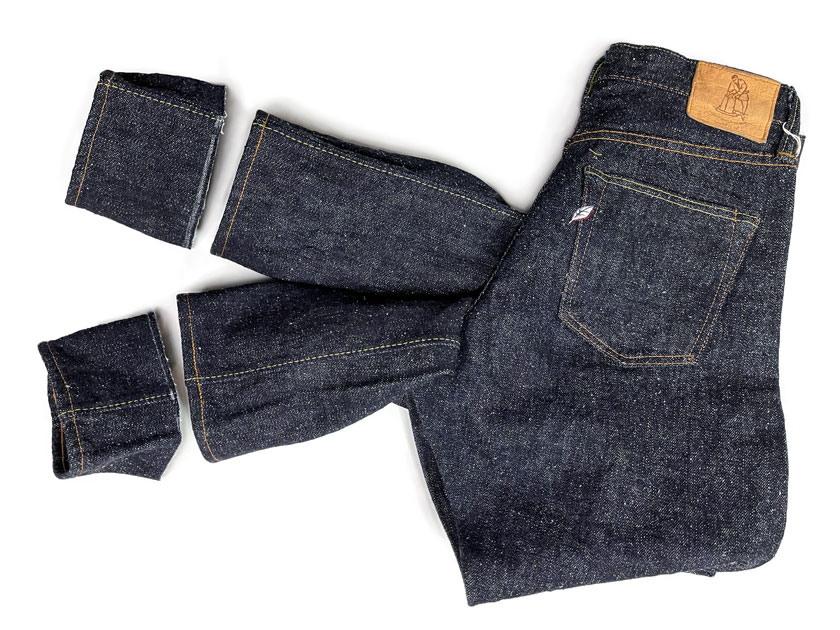
Summary
Jeans hemming is the process of shortening the leg or inseam length of a pair of jeans by removing some of the fabric from the bottom.
These photographs demonstrate the before and after effects of hemming alterations made by Williamsburg Garment Company to shorten the inseam of jeans to demonstrate “what jeans hemming is.” The top photograph features a pair of Pure Blue Japan jeans. It displays the altered inseam and leg openings as well as the portions of the hem that was removed.
The below image displays a pair of raw denim jeans with their original hem and full inseam length. A chalk line on the jeans marks the hemming cut line, which also includes a 1/2-inch double fold (1-inch).
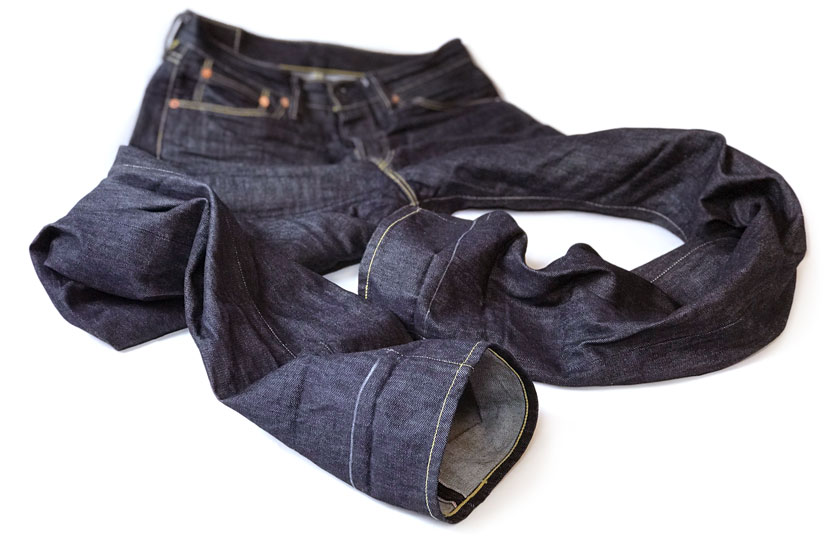
The majority of jeans are sewn with chain-stitched hemming. The average hem measures roughly 1/2 inch tall. A tailor or seamstress double folds the raw edge after cutting to the hem (leg opening). Since each fold measures approximately 1/2 inch, the inseam length must be increased by 1 inch to reach the desired length.
To see what we mean by double folding, and the process of hemming in action. Watch our video “Chain Stitch Hemming in 87 Seconds.”
Chain Stitch Hemming in 87 Seconds

You might be interested in
TCB Jeans crafts history into every stitch, reviving iconic denim like the 1966 Levi’s 501 and the 1955 Levi’s 701
Nick English from Stridewise visited our studio at 67 West Street to expertly tailor his jeans at the waist. Watch
In a sea of seasonal brews, Master of Pumpkins Ale by Tröegs Independent Brewing rises to the top. Our review
How to measure the inseam of twisted-leg jeans is made clear in our video lesson. Learn how to handle this

So you splurged on that vintage-looking pair of Gap 1969 jeans. They are everything you were looking for, but about 4-to-5-inches too long. Now what? You don’t want to wear them rolled with a huge cuff – or even have them stacking over your shoes. You want to make them one of your go-to jeans, so you need them to fit right. Here’s how you can make that happen: With fast professional chainstitch denim hemming service that’s available from any city or town in the USA! We make our alterations services simple and both affordable and easy to execute. Read on to learn how we can help you achieve the perfect fit:
What is a Chainstitch Hem?
A chainstitch hem is a technique used in most jeans. It’s a fairly common and durable stitch that is found on most jeans. As seen on the above pair of Gap 1969 jeans, you’ll want to ensure when shortening your inseam, the jeans have the same style of sewing as the original store-bought jeans. That’s with chain stitching and thick, heavy threads. Both are not options not usually found at local tailors, cleaners, and even department stores or a brand’s in-store alterations services. Read more on chainstitch hemming on our blog.
How to order Hemming from us
We receive and ship altered jeans, pants, and shirts from all over the USA. Sometimes, those seeking the very best denim services will ship us garments from other countries. We offer low-cost 2-way shipping options, so you can ship 1 or multiple items in an order for the same low price. With 2-way shipping, we email you a shipping within a few hours of placing your order, or the next morning when ordering after business hours.
Additional Rush Alterations Options to Consider
We offer RUSH and STANDARD SERVICE. The fastest is Same-Day while you wait. The next fastest is 1-Day Service. Our regular service takes about 5-to-7 days. Pricing for all services is listed on the ordering page.
The Catch-22 of Denim Hemming
Unfortunately, there are DIY techniques and non-professional denim tailors who offer what’s called an Original Hem alteration. They say you can retain the original pre-washed edge on the leg opening, but they don’t tell how bad your jeans will look on the inside or how you will lose the flexibility of the hem.
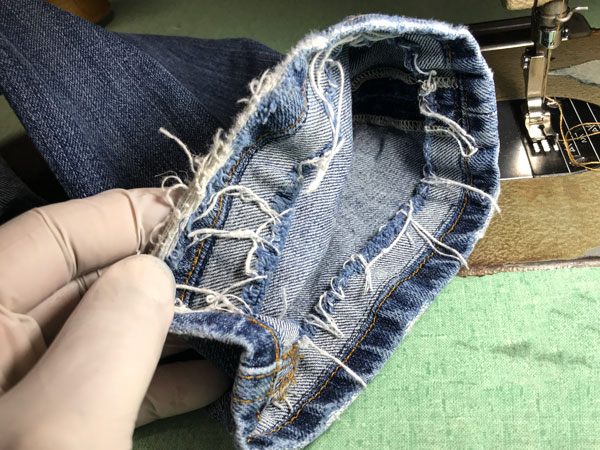
Final Words
Original hems are a bad idea. Don’t let anyone talk you into this style of alteration. We get lots of jeans sent to us with requests to undo this alteration and re-hem the jeans correctly with chain stitching.
The pre-washed edge on the leg opening, as seen on the section cut from Gap 1969 jeans comes back in time with washing and wearing. If you want to speed up the process, you can rough up the hem with sandpaper, a sharp blade, or an electric grinder for the shredded look. For fast fading, wet and wrinkle the hem, then rub in a small amount of bleach on the high points, and dip the hem in cold water to halt the fading. Machine wash the jeans after.
You might be interested in
TCB Jeans crafts history into every stitch, reviving iconic denim like the 1966 Levi’s 501 and the 1955 Levi’s 701
Nick English from Stridewise visited our studio at 67 West Street to expertly tailor his jeans at the waist. Watch
In a sea of seasonal brews, Master of Pumpkins Ale by Tröegs Independent Brewing rises to the top. Our review
How to measure the inseam of twisted-leg jeans is made clear in our video lesson. Learn how to handle this
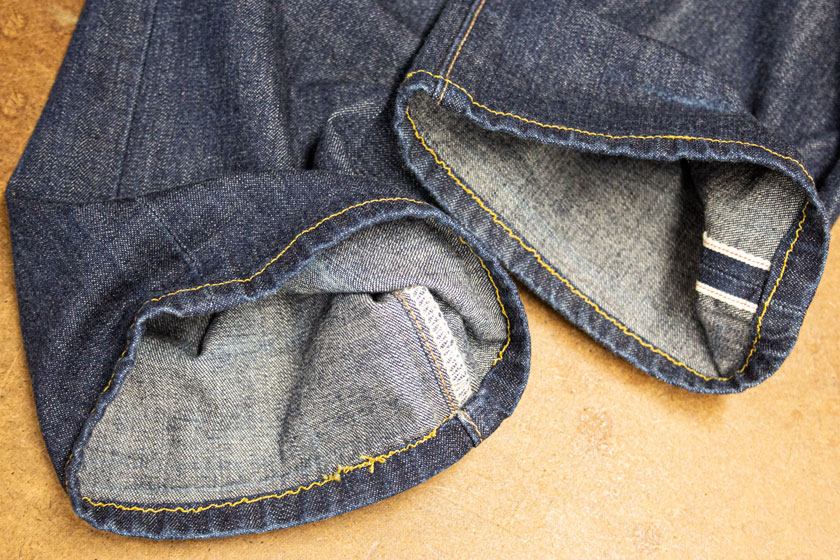
We fix a lot of professional tailor shops and DIY home sewing machine hemming jobs. People learn the hard way that home sewing machines aren’t up to standard when working with denim and then send jeans to us for re-hemming. The thick seamlines are just too much for most domestic machines, so we often find thin broken needles stuck inside of hems.
Others discover that the difference between the quality of denim alterations from a suit tailor or local cleaners, and us is like night and day. That’s because the heavyweight fabric requires specialized machines and the workmanship required for denim is worlds apart from suits, fine trousers, dresses, and style of garments commonly worked on at most tailoring shops.
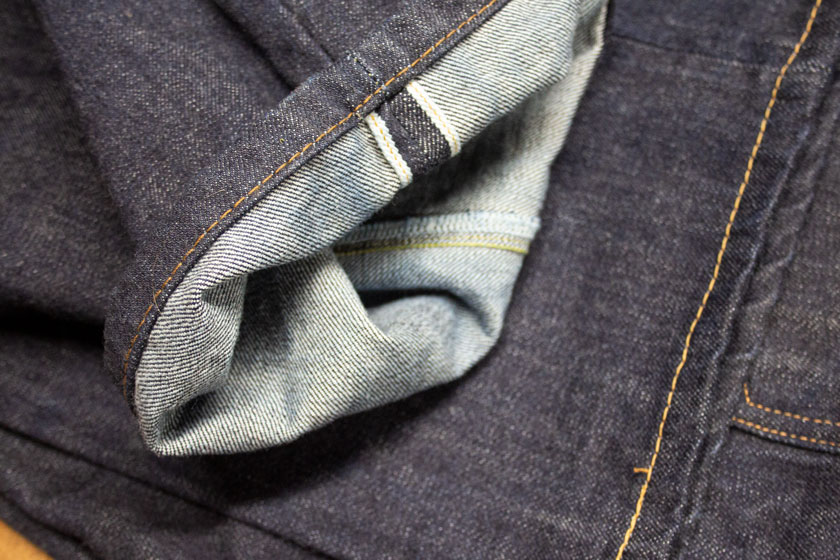
Hems are commonly sewn with chain stitching at jeans factories. Most professional tailors will try to hem jeans on single-needle lockstitch machines, but they often can’t handle the thick fabric or seams. Again, home sewing machines aren’t nearly capable.
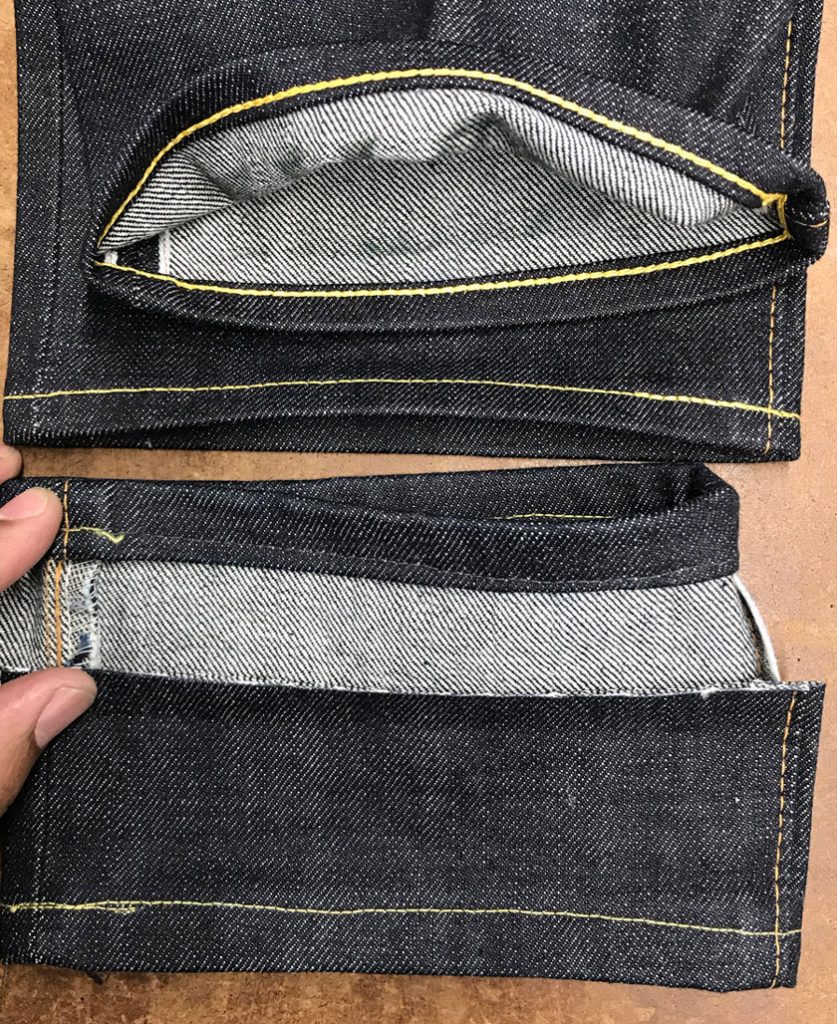
When it comes to stitching sizes, professional tailors will use threads that are a little heavier than the small thread sizes which must be used in domestic machines. But still, they usually don’t stock the thicker thread sizes commonly used with denim. The difference is plain to see when it comes to jeans- have them professionally altered by a denim specialist.
You might be interested in
TCB Jeans crafts history into every stitch, reviving iconic denim like the 1966 Levi’s 501 and the 1955 Levi’s 701
Nick English from Stridewise visited our studio at 67 West Street to expertly tailor his jeans at the waist. Watch
In a sea of seasonal brews, Master of Pumpkins Ale by Tröegs Independent Brewing rises to the top. Our review
How to measure the inseam of twisted-leg jeans is made clear in our video lesson. Learn how to handle this




